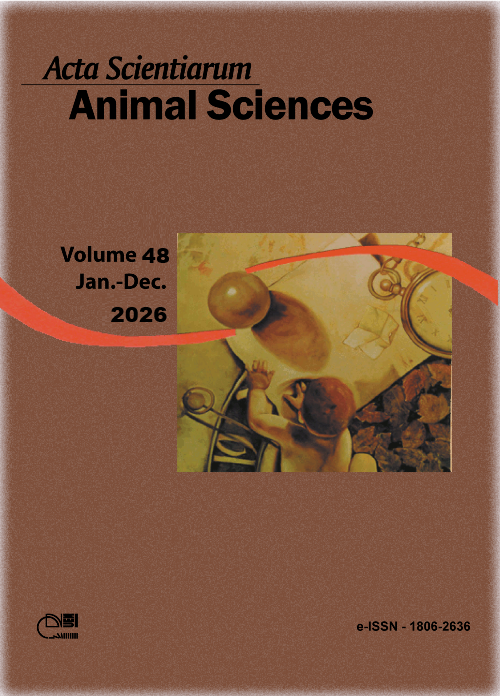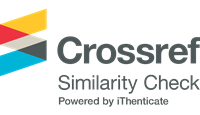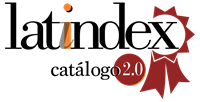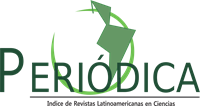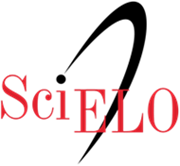Figuil limestone as a calcium source for Japanese quail: effects on growth, carcass, egg production, and blood biochemical parameters
Abstract
The poultry feed industry in Cameroon faces high costs due to its dependence on imported ingredients like shellfish meal, a key calcium source. To promote animal feed self-sufficiency and reduce imports, this study evaluates Figuil limestone as a local alternative. The effects of replacing shellfish meal with limestone meal on Japanese quail (Coturnix japonica) were assessed in terms of growth, carcass traits, and reproduction. A total of 300-day-old quails were divided into 15 groups. Five diets with increasing substitution levels of shell meal by limestone meal (0, 25, 50, 75, 100%) were tested, with each treatment replicated three times. At 7 weeks, six birds per batch were sampled for biochemical and carcass analysis. Results showed that feed intake increased with limestone inclusion, while growth, carcass, and organ traits remained unaffected. A 50% substitution level improved the laying rate (24.9±2.2%) compared to the control (20.0±6.9%), though control birds had heavier eggs (12.1±0.1 g). Limestone also increased Haugh Units and edible content but reduced shell thickness. Biochemical parameters showed no significant differences. The study concluded that Figuil limestone can be an effective substitute for shellfish meal in quail diets, with 50% replacement level being the most effective during the early laying period.
Downloads
References
Abou-Kassem, D. E., El-Kholy, M. S., Alagawany, M., Laudadio V., Tufarelli V. (2019). Age and sex-related differences in performance, carcass traits, hemato-biochemical parameters, and meat quality in Japanese quails. Poultry Science, 98(4), 1684-1691. https://doi.org/10.3382/ps/pey543
Alaimo, K., Chilton, M., Jones, S. J. (2020). Food insecurity, hunger, and malnutrition. In B. P. Marriott, D. F. Birt,V. A. Stallings, & A. A. Yates (Eds.), Present knowledge in nutrition: clinical and applied topics in nutrition (Vol. 2, pp. 311-326). Elsevier. https://doi.org/10.1016/B978-0-12-818460-8.00017-4
Attia, Y. A., Abd El-Hamid, A. E., Ellakany, H. F., Bovera, F., Al-Harthi, M. A. & Ghazaly, S. A. (2013). Growing and laying performance of Japanese quail fed diet supplemented with different concentrations of acetic acid. Italian Journal of Animal Science, 12(37), 222-229. https://doi.org/10.4081/ijas.2013.e37
Attia, Y. A., Al-Harthi, M. A., & Abo El-Maaty, H. M. (2020). Calcium and cholecalciferol levels in late-phase laying hens: effects on productive traits, egg quality, blood biochemistry, and immune responses. Frontiers in Veterinary Science, 7, 1-17. https://doi.org/10.3389/fvets.2020.00389
Bagheri, R., Toghyani, M., Tabatabaei, S. N., Tabeidian, S. A., & Ostadsharif, M. (2022). Growth, physiological, and molecular responses of broiler quail to dietary source, particle size, and choice feeding of calcium. Italian Journal of Animal Science, 21(1), 74-85. https://doi.org/10.1080/1828051X.2021.2017361
Bakst, M. R. (2017). Reproduction in Poultry. In C. G. Scanes, & R. A. Hill (Eds.), Biology of domestic animals (pp. 213-238). CRC Press.
Bonos, E. M., Christaki, E. V., & Paneri, P. C. (2010). Performance and carcass characteristics of Japanese quail as affected by sex or mannan oligosaccharides and calcium propionate. South African Journal of Animal Science, 40(3), 173-184. https://doi.org/10.4314/sajas.v40i3.2
Bozkurt, M., & Küçükyilmaz, K. (2015). The role of boron in poultry nutrition Part II: compositional and mechanical properties of bone and egg quality. World’s Poultry Science Journal, 71(3), 483-492. https://doi.org/10.1017/S0043933915002184
Brandão, P. A., Costa, F. G. P., Silva, J. H. V., Brandão, J. S., Nobre, J. G. S., & Goulart, C. C. (2007). Exigência de cálcio para codornas japonesas (coturnix coturnix japonica) em postura em postura postura. Acta Scientiarum. Animal Sciences, 29(1), 17-21.
Çabuk, M., Eratak S., Alçicek, A., & Bozkurt, M. (2014). Effects of herbal essential oil mixture as a dietary supplement on egg production in quail. Hindawi Publishing Corporation, 2014, 1-4. https://doi.org/10.1155/2014/573470
Cashion, T., Le Manach, F., Zeller, D. & Pauly, D., (2017). Most fish destined for fishmeal production are food-grade fish. Fish and Fisheries, 18(5), 837-844. https://doi.org/10.1111/faf.12209
Ceylan, N., Koca, S., Yavaş, İ, & Çenesiz, A. (2023). Effects of lower dietary calcium and phosphorus on growth performance and bone mineralizatıon of broilers. Journal of the Hellenic Veterinary Medical Society, 74(3), 6063-6072. https://doi.org/10.12681/jhvms.30761
Dale, N. (1994). National research council nutrient requirements of poultry — ninth revised edition (1994). Journal of Applied Poultry Research, 3(1), 101. https://doi.org/10.1093/japr/3.1.101
Deviche P., Hurley L. L., and Bobby F. H., (2011). Avian testicular structure, function, and regulation. In D. O. Norris, & K. H. Lopez (Ed.), Hormones and Reproduction of Vertebrates - Birds (Vol. 4, pp. 27-70). Elsevier. https://doi.org/10.1016/B978-0-12-374929-1.10002-2
Djanabou, M., Djitie, F. K., Njimou, J. R., Lemougna, P. N., Kepdieu, J. M., Radu-Rusu, R. M., & Njintang, N. Y. (2025). Evaluating figuil limestone and shellfish as sustainable calcium sources for poultry nutrition: a comparative study with physicochemical characterization of quail eggshells. Journal of Research in Agriculture and Food Sciences, 2(2), 80-80. https://doi.org/10.5455/JRAFS.20250116113851
Djitie, K. F., Kana, J. R., Ngoula, F., Nana, N. F. C., & Teguia, A. (2015). Effect of crude protein level on growth and carcass in quail (Coturnix sp.) in the finishing phase in the Cameroon Highlands. Livestock Research for Rural Development, 27(8), 155. http://www.lrrd.org/lrrd27/8/koua27155.htm
El-Ghalid, O. A. H. (2009). Exogenous estradiol: blood profile, productive and reproductive performance of female Japanese Quails at different stages of production. Asian Journal of Poultry Science, 3(1), 1-8. https://doi.org/10.3923/ajpsaj.2009.1.8
Garcia, J., Murakami, A. E., Martins, E. N., & Furlan, A. C. (2000). Exigências nutricionais de cálcio e fósforo para codornas japonesas (Coturnix coturnix japonica) em postura. Acta Scientiarum. Animal Science, 22(3), 733-739. https://doi.org/10.4025/actascianimsci.v22i0.3141
Garcia-Casal, M. N. (2006). Carotenoids increase iron absorption from cereal-based food in the human. Nutrition Research, 26(7), 340-344. https://doi.org/10.1016/j.nutres.2006.06.015
Gilani, S., Mereu, A., Li, W., Plumstead, P. W., Angel, R., Wilks, G., & Dersjant-Li, Y. (2022). Global survey of limestone used in poultry diets: calcium content, particle size and solubility. Journal of Applied Animal Nutrition, 10(1), 19-30. https://doi.org/10.3920/JAAN2021.0015
Haugh, H. (1937). A new method for determining the quality of an egg. US Poultry Magazine, 39, 27-49.
Huss, D., Poynter, G., & Lansford, R. (2008). Japanese quail (Coturnix japonica) as a laboratory animal model. Lab Animal, 37, 513-519. https://doi.org/10.1038/laban1108-513
Institut National de la Recherche Agronomique. (1989). L’alimentation des animaux monogastriques: porcs, lapins, volailles. INRA.
Jeke, A., Phiri, C., Chitindingu, K., & Taru, P. (2018). Ethnomedicinal use and pharmacological potential of Japanese quail (Coturnix coturnix japonica) birds` meat and eggs, and its potential implications on wild quail conservation in Zimbabwe: a review. Cogent Food and Agriculture. Informa Healthcare, 4(1), 1-12. https://doi.org/10.1080/23311932.2018.1507305
Kaplan, L. A. & Pesce, A. J. (1996). Interferences in chemical analysis. In: Kaplan L.A., Pesce A.J., editors. Clinical Chemistry-Theory, analysis, and correlation. 2nd edn. St. Louis, USA: The C. V. Mosby Company; 1989. pp. https://doi.org/10.1007/BF02867865
Kayang, B. B., Vignal, A., Inoue-Murayama, M., Mmiva, L., Monvoisin J., Sito, & Minvielle F. (2004). A first génération microsatellite linkage map of the Japanese quail. Animal Genetics 35(3), 195-200. https://doi.org/10.1111/j.1365-2052.2004.01135.x
Klasing, K. C. (2005). Poultry nutrition: a comparative approach. Journal of Applied Poultry Research, 14(2), 426-436. https://doi.org/10.1093/japr/14.2.426
Koutsos, E. A., López, J. C. G., & Klasing, K. C. (2006). Carotenoids from in ovo or dietary sources blunt systemic indices of the inflammatory response in growing chicks (Gallus gallus domesticus). Journal of Nutrition, 136(4), 1027-1031. https://doi.org/10.1093/jn/136.4.1027
Li, X., Zhang, D., & Bryden, W. L. (2017). Calcium and phosphorus metabolism and nutrition of poultry: are current diets formulated in excess? Animal Production Science, 57(11), 2304-2310. https://doi.org/10.1071/AN17389
Mahrose, K. M., Abol-Ela, S., Amin, R. M., & Abou-Kassem, D. E. (2020). Restricted feeding could enhance feed conversion ratio and egg quality of laying japanese quail kept under different stocking densities. Animal Biotechnology, 33(1), 141-149. https://doi.org/10.1080/10495398.2020.1810059
Makinde, O. J., Sekoni, A. A., Babajide, S., Samuel, I. & Ibe, E. (2013). Comparative response of Japanese quails (Coturnix coturnix japonica) fed palm kernel meal and brewer’s dried grain-based diets. International Journal of Agriculture and Biosciences, 2(5), 217-220. http://www.ijagbio.com/pdf-files/volume-2-no-5-2013/217-220.pdf
Mallick, P., Muduli, K., Biswal, J. N., & Pumwa, J. (2020). Broiler poultry feed cost optimization using linear programming technique. Journal of Operations and Strategic Planning, 3(1), 31-57. https://doi.org/10.1177/2516600x19896910
Markos, S., Bereket, B., & Tess, A. (2017). Evaluation of egg quality traits of three indigenous chicken ecotypes kept under farmers’ management conditions. International Journal of Poultry Science, 16(5),180-188. https://doi.org/10.3923/ijps.2017.180.188
Minvielle, F. (2004). The future of Japanese quail for research and production. World’s Poultry Science Journal, 60(4), 500-507. https://doi.org/10.1079/WPS200433
Moura, G. R. S., Reis, R. S., Mendonça, M. O., Salgado, H. R., Abreu, K. S., Madella, G. S., & Lima, M. B. (2020). Substitution of limestone for eggshell powder in the diet of japanese laying quails. Revista Brasileira de Saúde e Produção Animal, 21(1), 1-13. https://doi.org/10.1590/S1519-9940210152020
Narváez-Solarte, W., Rostagno, H. S., Soares, P. R., Silva, M. A., & Uribe Velasquez, L. F. (2005). Nutritional requirements in methionine + cystine for white-egg laying hens during the first cycle of production. International Journal of Poultry Science, 4(12), 965-968. https://doi.org/10.3923/ijps.2005.965.968
Nys, Y., & Le Roy, N. (2018). Calcium homeostasis and eggshell biomineralization in female chicken. In D. Feldman (Ed.), Vitamin D (Vol. 1, pp. 361-382). Elsevier. https://doi.org/10.1016/B978-0-12-809965-0.00022-7
Ouaffai, A., Dahloum, L., Fassih, A., Milagh, M., & Halbouche, M. (2018). Performances de croissance, de ponte et qualité de l’œuf chez la caille Japonaise (Coturnix coturnix japonica). Archivos de Zootecnia, 67(258), 168-176. https://doi.org/10.21071/az.v67i258.3651
Pavlik, A., Lichovnikova, M., & Jelínek, P. (2009). Blood plasma mineral profile and qualitative indicators of the eggshell in laying hens in different housing systems. Acta Veterinaria Brno, 78(3), 419-429. https://doi.org/10.2754/AVB200978030419
Pelicia, K., Garcia, G., Faitarone, A. B. G., Silva, A. P., Berto, D. A., Molino, A. B., & Vercese, F. (2009). Calcium and available phosphorus levels for laying hens in second production cycle. Brazilian Journal of Poultry Science, 11(1), 39-49. https://doi.org/10.1590/S1516-635X2009000100007
Perine, T. P., Marcato, S. M., Furlan, A. C., Grieser, D. D. O., Zancanela, V., Stanquevis, C. E., Benites, M. I. & Euzébio, T. C. (2016). Calcium requirement and vitamin D supplementation in meat-type quail at second stage of growth. Revista Brasileira de Zootecnia, 45(11), 655-660. https://doi.org/10.1590/S1806-92902016001100003
Pizzolante, C. C., Garcia, E. A., Saldanha, E. S. P. B., Laganá, C., Faitarone, A. B. G., Souza, H. B. A., & Pelicia, K. (2007). Beak trimming methods and their effect on the performance and egg quality of Japanese quails (Coturnix japonica) during lay. Brazilian Journal of Poultry Science, 9(1), 17-21. https://doi.org/10.1590/S1516-635X2007000100003
Pourmollaei, F., Ghazaghi, M., Rokouei, M., Bagherzadeh-Kasmani, F., & Mehri, M. (2025). Calcium requirements in growing Japanese quail from 21 to 35 days post-hatch. Poultry Science, 104(2), 1-8. https://doi.org/10.1016/j.psj.2024.104700
Proszkowiec-Weglarz, M., & Angel, R. (2013). Calcium and phosphorus metabolism in broilers: Effect of homeostatic mechanism on calcium and phosphorus digestibility. Journal of Applied Poultry Research, 22(3), 609-627. https://doi.org/10.3382/japr.2012-00743
Radu-Rusu, R. M., Usturoi, M. G., Leahu, A., Amariei, S., Radu-Rusu, C. G., & Vacaru-Opriş, I. (2014). Chemical features, cholesterol, and energy content of table hen eggs from conventional and alternative farming systems. South African Journal of Animal Science, 44(1), 33-42. https://doi.org/10.4314/SAJAS.V44I1.5
Santhi, D., & Kalaikannan, A. (2017). Japanese quail (Coturnix coturnix japonica) meat: characteristics and value addition. World’s Poultry Science Journal, 73(2), 337-344. https://doi.org/10.1017/S004393391700006X
Siyadati, S.-A., Mirzaei-Aghsaghali, A., & Ghazvinian, K. (2011). Effect of varying ratio of energy and protein on live performance and visceral organs of male Japanese quail. Annals of Biological Research, 2(2), 137-144. Retrieved from http://scholarsresearchlibrary.com/archive.html (link does not give access to the material)
Souza, D. S. , Calixto, L. F. L., Lemos, M. J., Silva Filho, C. A., Pinho, T. P., Machado, C. A., Melo, I. A., &Togashi, C. K. (2016). Quail performance and egg quality at the end of production fed with varying levels of calcium. Semina:Ciencias Agrarias, 37(4, Supl 1), 2395-2406. https://doi.org/10.5433/1679-0359.2016v37n4Supl1p2395
Sultana F., Islam M. S., M. D., & Abdur Rahman H. (2007). Effect of dietary calcium sources and levels on egg production and eggshell quality of japanese quail. International Journal of Poultry Science, 6(2), 131-136. https://doi.org/10.3923/ijps.2007.131.136
Toghyani, S., Dashti, G., Roudbari, N., Rouzbehani, S., & Monajemi, R. (2013). Lithium carbonate inducing disorders in three parameters of rat sperm. Advanced Biomedical Research, 2(1), 55. https://doi.org/10.4103/2277-9175.115793
Vieira, D. V. G., Barreto, S. L. T., Valeriano, M. H., Jesus, L. F. D., Silva, L. F. F., Mencalha, R., Barbosa, K. S., Mendes, R. K. V., Cassuce, M. R., & Melo, T. S. (2012). Calcium and phosphorus requirements for Japanese quails aged between 26 and 38 weeks. Revista Brasileira de Saúde e Produção Animal, 13(1), 204-213.
Walk, C. L., Wang, Z., Wang, S., Sorbara, J. O. B., & Zhang, J. (2022). Determination of the standardized ileal digestible calcium requirement of male Arbor Acres Plus broilers from day 25 to 42 post-hatch. Poultry Science, 101(11), 1-9. https://doi.org/10.1016/j.psj.2022.102146
Wang, G., Kim, W. K., Cline, M. A., & Gilbert, E. R. (2017). Factors affecting adipose tissue development in chickens: a review. Poultry Science, 96(10), 3687-3699. https://doi.org/10.3382/ps/pex184
Williams, K. C. (1992). Some factors affecting albúmen quality with reference to Haugh unit score. Poultry Science, 48(1), 6-16. https://doi.org/10.1079/WPS19920002
Wongdee, K., Rodrat, M., Teerapornpuntakit, J., Krishnamra, N., & Charoenphandhu, N. (2019). Factors inhibiting intestinal calcium absorption: hormones and luminal factors that prevent excessive calcium uptake. The Journal of Physiological Sciences, 69(5), 683-696. https://doi.org/10.1007/s12576-019-00688-3
Copyright (c) 2026 Francois Djitie Kouatcho, Emile Miégoué, Hippolyte Mekuiko Watsop, Raïssa Nai, Claudia Panzaru, Razvan Radu-Rusu, Eliza Smiz, Nicolas Njintang Yanou

This work is licensed under a Creative Commons Attribution 4.0 International License.
DECLARATION OF ORIGINALITY AND COPYRIGHTS
- I Declare that current article is original and has not been submitted for publication, in part or in whole, to any other national or international journal.
The copyrights belong exclusively to the authors. Published content is licensed under Creative Commons Attribution 4.0 (CC BY 4.0) guidelines, which allows sharing (copy and distribution of the material in any medium or format) and adaptation (remix, transform, and build upon the material) for any purpose, even commercially, under the terms of attribution.
Read this link for further information on how to use CC BY 4.0 properly.




